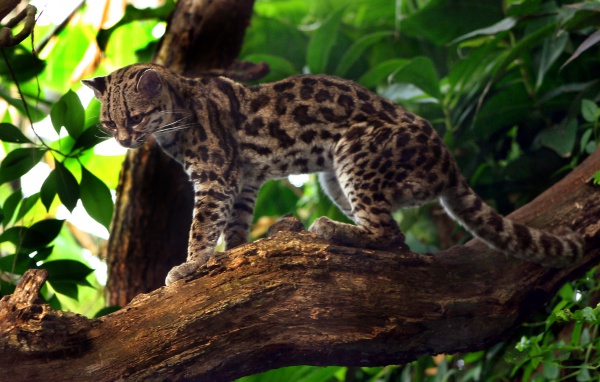Facts About Margay
The margay is a small wild cat native to the primary forests of Central and South America. Unfortunately, it was heavily hunted for the wildlife trade until the 1990s, which led to a significant decline in its population. Today, it is classified as Near Threatened on the IUCN Red List, primarily due to habitat loss from deforestation.
In appearance, the margay closely resembles the ocelot but has a few distinct differences: it has a shorter head, larger eyes, and longer tail and legs. This cat is an expert climber, earning the nickname "tree ocelot." It often hunts in trees, displaying impressive agility and flexibility.
Margays can be found from Mexico down to Brazil and Paraguay, typically in dense forested areas. They are predominantly nocturnal but occasionally hunt during the day. These cats lead solitary lives, with each individual claiming a home range of about 11-16 square kilometers, which they mark with scent.
Margays have a varied diet that includes small mammals, birds, lizards, and even some vegetation. They are adept hunters, often pursuing their prey entirely in the trees. Regarding reproduction, margays have a gestation period of about 80 days, usually resulting in the birth of one kitten between March and June. Sadly, many cubs do not survive, making population growth challenging.
From a taxonomic perspective, margays were initially classified under different names, but genetic studies have now recognized three subspecies. Locally, the margay is known by several names: "gato tigre" and "tigrillo" in Spanish, "gato-maracajá" in Portuguese, and "mbarakaya" in Guaraní.

 Guatemala
Guatemala